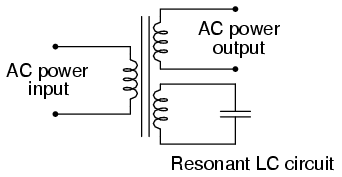What is voltage regulation?
In this article we will discuss about what is voltage regulation in transformer. What is basic mean of voltage regulation? here we will learn about what is voltage regulation in transformer.
What is voltage regulation?
Modern power system operates at some standard voltages. The equipment’s working on these systems are given input voltages, within certain agreed tolerance limits. In many applications this voltage itself may not be good enough for obtaining the best operating conditions for the loads. A transformer is interposed in between the load and the supply terminals in such cases.
here are additional drops inside the transformer due to the load currents. While input voltage is the responsibility of the supply provider, the voltage at the load is the one which the user has to worry about. we can defined voltage regulation by two ways.
1. Regulation down
2. Regulation up
So these two type of voltage regulation being in transformer. Regulation up and regulation down. for transformer it is most required to low voltage regulation. For better understand that what is the voltage regulation we required to know that what is regulation down and up.
1. Regulation down
It is defined as “the change in terminal voltage when a load current at any power factor applied, expressed as a fraction of the no-load terminal voltage”. It is called low voltage regulation.
Expressed in symbolic from we have,
Regulation down = No load voltage – On load voltage / No load voltage
2. Regulation up
Here again the regulation is expressed as the ratio of the change in the terminal voltage when a load at a given power factor is thrown OFF, and the on load voltage. This definition if expressed in symbolic from result in
Regulation up = No load voltage – on load voltage / on load voltage.
Normally full load regulation is of interest as the part of load regulation is going to be lower.
This definition is more commonly used in the case of alternators and power systems as the user end voltage is guaranteed by the power supply provider. He has to generate proper no load voltage at the generating station to provide the user end voltage. In the expressions of the regulation, only the numerical differences of the voltages are taken and not vector differences.
In the case of transformers both definitions result in more or less the same value for the regulation, as the transformer impedance is very low and the power factor of operation is quit high. The power factor of the load is defined with respect to the terminal voltage on load. Hence, a convenient starting point is the load voltage.
Effect of voltage regulation on efficiency of transformer
Transformer which are connected to the power supplies and loads are required to handle, load current and power as per the requirements of the load.
Efficiency of transformer
For knowing what is voltage regulation effect on efficiency we required to know about efficiency of transformer.
The ratio of out put power and input power is called efficiency.
Efficiency = it is ,, Output power /Input power
If voltage regulation is less than transformer efficiency increase and if voltage regulation is more than its efficiency will reduce. it is not good for transformer .
so it is voltage regulation article if you will fined any incorrect in this article please comment below.
